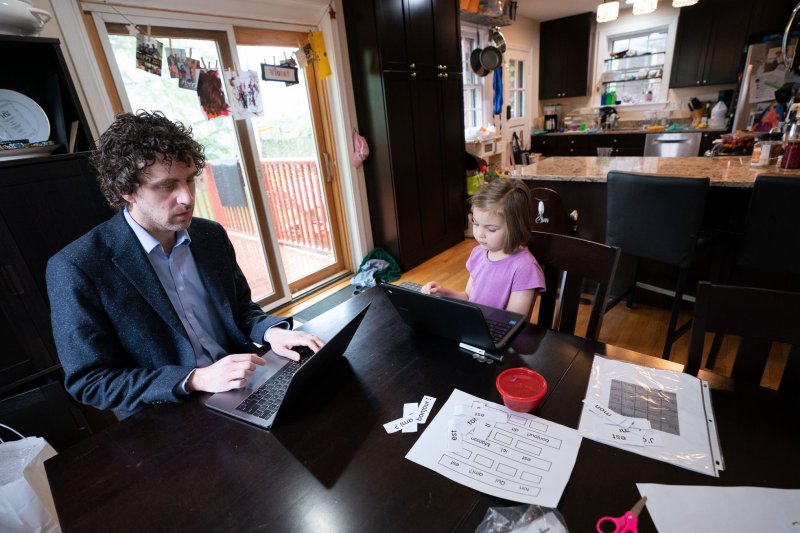Turn off the oil taps? Norway torn between climate and cash
Issued on: 10/09/2021 -

The 'code red' sounded by the United Nations last month has reignited debate about the future of the oil industry in Norway
Petter BERNTSEN AFP
Stavanger (Norway) (AFP)
In Stavanger's harbour, the Petroleum Museum chronicles Norway's road to riches. Now, faced with the climate crisis, a growing chorus wants fossil fuels to be relegated to history for good.
The "code red" sounded by the United Nations in early August has reignited debate about the future of the oil industry in Norway, the largest oil producer in western Europe, ahead of Monday's legislative elections.
The Green party, MDG, -- whose support the opposition centre-left, currently leading in the polls, may rely on in order to obtain a parliamentary majority -- has called for an immediate end to oil prospecting and a halt to production by 2035.
"Oil belongs in a museum. It served us very well for many decades but we can now see that it is destroying our climate," says Ulrikke Torgersen, the Greens candidate in Stavanger, Norway's oil capital where it is often said locals have oil running through their veins.

'Oil belongs in a museum,' says Ulrikke Torgersen, the Greens candidate in Stavanger, Norway's oil capital, in Monday's legislative elections
Petter BERNTSEN AFP
The UN climate report, which warned of an acceleration of "unprecedented" extreme events linked to climate change, propelled the subject right to the heart of the election campaign.
Norway's two biggest parties -- the Conservatives led by Prime Minister Erna Solberg and the Labour Party led by her likely successor Jonas Gahr Store -- have both refused to bid farewell to black gold.
But each camp has small factions pushing for the country to set an example by putting an end to its oil dependence and speeding up its green transition in order to respect its commitments under the 2015 Paris climate accord.
According to a poll on August 20, 35 percent of Norwegians said they were in favour of ending oil exploration.
Even the International Energy Agency (IEA) has warned that all fossil fuel exploration projects must cease immediately if the world is to keep global warming under control.
- A painful break -
A clean break would be painful for Norway: the oil sector accounts for 14 percent of gross domestic product, as well as 40 percent of its exports and 160,000 direct jobs.
Over the years, oil and gas have financed Norway's generous welfare state, as well as costly environmental initiatives such as incentives for electric car purchases and the protection of rain forests.
In addition, the cash cow has helped the country of 5.4 million people amass the world's biggest sovereign wealth fund, today worth more than 12 trillion kroner (almost 1.2 trillion euros, $1.4 trillion).

Over the years, oil and gas have financed Norway's generous welfare state and helped amass the world's biggest sovereign wealth fund
Petter BERNTSEN AFP
The oil industry has been quick to point out that of all the world's oil, Norwegian crude emits the lowest amount of greenhouse gases -- at least at the drilling stage.
A recent study even claimed that an end to Norway's oil and gas production would lead to an increase in worldwide emissions, as Norwegian products would be replaced by even more polluting energy sources.
"It would be paradoxical to halt oil and gas production which has the lowest CO2 footprint at a time when the world still needs it," said Anniken Hauglie, head of the oil lobby Norsk Olje & Gass.

But Anniken Hauglie, head of the oil lobby Norsk Olje & Gass, insists that other kinds of fossil fuels must be got rid of first, especially coal
Petter BERNTSEN AFP
"We need to get rid of other kinds of fossil fuels first, in particular coal," she said.
And, she insisted, oil companies also have a wealth of knowledge, technology and capital that will be needed for the development of future energy solutions, such as offshore wind power, hydrogen and carbon capture and storage (CCS).
- Students going elsewhere -
Despite paying high salaries, the oil industry is struggling to attract young talent.
At the University of Stavanger, the number of Masters students in oil engineering is shrinking like the icecap in summer.

Despite the prospect of a high-paying job later on, at the University of Stavanger, the number of Masters students in oil engineering is shrinking
Petter BERNTSEN AFP
From over 60 students in 2013, most of them Norwegians, their number has dropped to 22 this year, including only a handful of nationals.
"We need to get rid of fossil fuels, no doubt about it. Even we in Norway as an oil-producing country, we know that. But the question is how fast we should do that and how prepared we are for that," professor Mahmoud Khalifeh told AFP.
"Even if you want to stop oil production, we need petroleum engineers to design how to properly close thousands of active wells to avoid leakages to the environment," he added.
Camilla Abrahamsen is determined to get her degree and become a drilling engineer.

Student Camilla Abrahamsen, 25, hopes one day to help make oil a bit greener
Petter BERNTSEN AFP
"I want to contribute to the future. Maybe try to make oil a bit greener," the 25-year-old student said.
Does she have any doubts about her career choice?
"I'll be old by the time we can live without oil," she added.
© 2021 AFP
Climate change dominates elections in oil-rich Norway
Issued on: 10/09/2021 -

Norway's Prime Minister Erna Solberg has been in power for eight years
Ali Zare NTB/AFP
Oslo (AFP)
Oil-rich Norway goes to the polls on Monday in elections dominated by climate change that the ruling Conservative party is widely expected to lose to a Labour-led coalition.
Labour Party leader Jonas Gahr Store is hoping to wrest power from centre-right Prime Minister Erna Solberg, who has headed the wealthy Scandinavian nation for eight years.
Polls suggest Solberg is unlikely to win again, and the key question is whether Store's hoped-for coalition with the Centre and Socialist Left parties will get enough votes for a parliamentary majority.
If not he may have to seek the support of other small parties.
"Something really dramatic would have to happen for the right-wing to win," political scientist Johannes Bergh of the Norwegian Institute for Social Research told AFP.
The campaign has largely focused on the future of the oil industry in Norway, western Europe's biggest producer.
Norway owes its riches to black gold, enabling it to amass the world's biggest sovereign wealth fund.
The country has embraced environmentally-friendly policies to tackle climate change in recent years, but Store says it's not been enough.
He has vowed to introduce "fair" climate policies and narrow socioeconomic divides.
"We haven't done nearly enough in our climate transition and our welfare state has in many areas been cut back, privatised or carved up," the 61-year-old told AFP.
"After eight years of right-wing politics, inequalities have increased in Norway."
- Black gold -
Though Store's own Labour party is expected to put in a poor showing at the polls, he should be able to take the election with the help of his allies, primarily the agrarian Centre Party and Socialist Left.
It remains to be seen whether the three parties will win a majority, or have to rely on support from the communist Rodt party and the Green MDG party.

Labour Party leader Jonas Gahr Store is hoping to wrest power from centre-right Prime Minister Erna Solberg
Javad Parsa NTB/AFP
The Greens have called for an immediate halt to oil exploration and an end to production by 2035.
But Store has rejected the ultimatum, saying he wants to fight global warming without endangering jobs.
"The climate and environment will be a major issue, maybe the key issue, when it comes to building a government after the elections," Bergh said.
"It will be difficult for the various parties to agree."
The centre-right has called on Norwegians to vote for continuity, citing Solberg's strong track record.
In eight years at the helm -- a record for the Conservatives -- Solberg has steered the country through the migrant crisis, plunging oil prices and the pandemic.
"The choice this year is between Erna (Solberg's) safe leadership with policies that work, and an uncertain alternative," the Conservative Party said.
"We need solid management and a clear course ahead to kickstart Norway after the pandemic."
- 'More billionaires' -
After the Vatican and Iceland, Norway has the lowest number of Covid deaths in Europe per capita, and its economy has already returned to its pre-pandemic level.
But critics have accused the outgoing government of being overly optimistic about returning to a post-pandemic reality.
In mid-August Health Minister Bent Hoie told Norwegians "we'll be able to dance slow dances and resume 'one-night stands' at the end of September".
But facing rising infection rates, the government has had to postpone the lifting of all its restrictions several times.
Solberg also ran into trouble when she broke her own government's social distancing rules at her 60th birthday celebration in March, a mistake that also cost her a hefty fine.

Norway is western Europe's biggest oil producer
Tom LITTLE AFP
Ahead of the vote Monday, the election campaign was in full swing in downtown Oslo.
"Under Solberg, the inequality gap has widened. The number of billionaires keeps growing," complained one pensioner.
Near a Conservative Party campaign stand, an elegantly-dressed woman says she wants Solberg to win.
"Of course we all care about the environment, but without oil revenues what is going to pay for our welfare state?".
© 2021 AFP



















